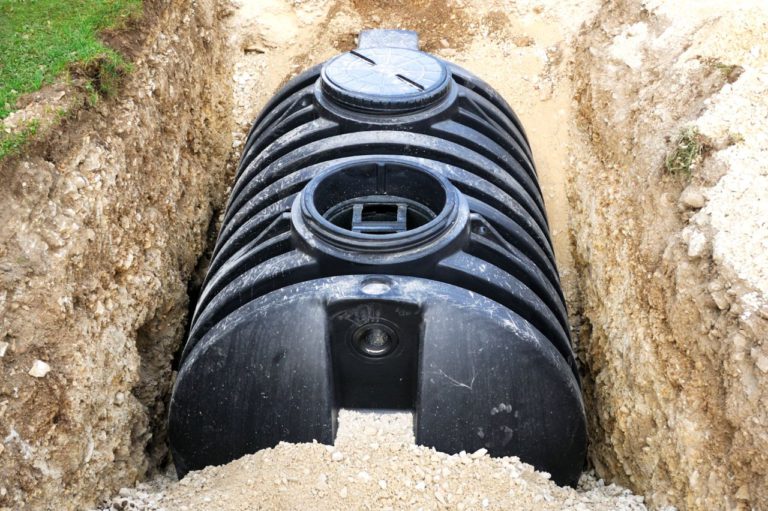Choosing the Right Size Septic Tank: A Homeowner’s Guide
Key Takeaways
- Understanding the Importance of Septic Tank Size
- Factors to Consider When Determining Septic Tank Size
- Calculating the Appropriate Septic Tank Capacity
- Residential Septic Tank Size Guidelines
- Considerations for Large Households or High-Water Usage
Understanding the Importance of Septic Tank Size

Septic tanks are a crucial component of a home’s wastewater management system, responsible for collecting, treating, and disposing of household waste. The size of the septic tank directly impacts its efficiency and the overall performance of the system. Homeowners must carefully consider the appropriate tank size to ensure their septic system functions effectively and meets the needs of their household.
Septic tanks play a vital role in the proper treatment and disposal of wastewater, preventing the release of harmful contaminants into the environment. An improperly sized septic tank can lead to a variety of issues, such as slow drainage, backups, and even environmental damage. By understanding the importance of selecting the right septic tank size, homeowners can ensure their system operates efficiently and avoids costly repairs or replacements down the line.
The size of the septic tank is a critical factor in determining the system’s ability to handle the household’s wastewater. A tank that is too small may become overwhelmed, leading to system failures and potential health and environmental hazards. Conversely, a tank that is too large may not function as effectively, resulting in unnecessary costs and inefficient use of resources. Striking the right balance is essential for a well-functioning septic system.
Factors to Consider When Determining Septic Tank Size
When determining the appropriate septic tank size, several key factors must be taken into account. The first consideration is the household size and water usage. The number of bedrooms, occupants, and daily water consumption all play a significant role in determining the required tank capacity. Homes with more bedrooms and a larger number of occupants will typically need a larger septic tank to accommodate the increased wastewater output.
In addition to household size and water usage, the type of soil and the size of the drainage field are also crucial factors. The soil’s percolation rate, which measures the rate at which water is absorbed into the ground, directly impacts the required septic tank capacity. Areas with slower percolation rates may require a larger tank to allow for more efficient treatment and disposal of the wastewater. The size of the drainage field, where the treated effluent is dispersed, is also a key consideration, as it must be properly sized to handle the volume of wastewater.
By carefully evaluating these factors, homeowners can ensure that the selected septic tank size is appropriate for their specific needs and the characteristics of their property. Overlooking any of these important considerations can lead to an improperly sized system, resulting in costly repairs, environmental issues, and potential health hazards.
Calculating the Appropriate Septic Tank Capacity
Determining the appropriate septic tank capacity involves utilizing industry-standard formulas and guidelines. These calculations take into account the number of bedrooms, the expected number of occupants, and the daily water usage to determine the recommended tank size.
When calculating the septic tank capacity, it is essential to consider not only the current household size and water usage but also potential future changes. Homeowners should factor in the possibility of future expansion, such as adding bedrooms or accommodating a growing family, to ensure the septic tank can handle the increased wastewater load. By planning for these potential changes, homeowners can avoid the need for costly system upgrades or replacements down the line.
The process of calculating the appropriate septic tank size can be complex, as it involves various factors and local regulations. Homeowners may benefit from consulting with a professional septic system installer or a local regulatory authority to ensure they select the correct tank size for their specific needs. These experts can provide guidance on the appropriate formulas, guidelines, and any local requirements that must be considered when determining the optimal septic tank capacity.
Residential Septic Tank Size Guidelines
| Household Size | Septic Tank Size (gallons) |
|---|---|
| 1-2 people | 750-900 |
| 3-5 people | 1,000-1,200 |
| 6-8 people | 1,200-1,500 |
For single-family homes, the typical septic tank sizes range from 1,000 to 2,500 gallons. The specific size required will depend on the number of bedrooms and the expected water usage within the household.
As a general guideline, a 1,000-gallon septic tank is often suitable for homes with up to three bedrooms, while a 1,500-gallon tank may be appropriate for homes with four bedrooms. For larger homes with five or more bedrooms, a 2,000-gallon or even a 2,500-gallon tank may be necessary to accommodate the increased wastewater output.
It is important to note that these guidelines are just a starting point, and there may be additional factors that can influence the required septic tank size. For example, homes with high-water usage appliances, such as whirlpool baths or water softeners, may require a larger tank to handle the increased water flow. Additionally, local regulations and building codes may have specific requirements for septic tank sizes, which must be taken into consideration.
Homeowners should always consult with a professional septic system installer or their local regulatory authority to ensure they select the appropriate septic tank size for their specific property and household needs. Proper sizing is crucial to the long-term performance and efficiency of the septic system.
Considerations for Large Households or High-Water Usage
For larger households or homes with high water consumption, the standard septic tank sizes may not be sufficient to meet the increased wastewater demands. In these cases, homeowners may need to explore alternative septic system designs or consider a multi-tank setup to accommodate their specific needs.
Households with a larger number of occupants or those with high-water usage appliances, such as whirlpool baths, washing machines, or water softeners, may require a larger septic tank capacity. These homes may benefit from a 2,500-gallon or even a 3,000-gallon tank to ensure the system can handle the increased wastewater volume without becoming overwhelmed.
In some cases, a single-tank system may not be the most suitable solution, and a multi-tank setup may be necessary. This approach involves installing two or more septic tanks in series, allowing for a greater overall capacity and more efficient treatment of the wastewater. Multi-tank systems can be particularly beneficial for homes with very high water usage or in areas with challenging soil conditions.
When dealing with large households or high-water usage, it is crucial to consult with a professional septic system installer or a local regulatory authority. These experts can provide guidance on the most appropriate septic system design and size to meet the specific needs of the property and ensure compliance with local regulations. By working with experienced professionals, homeowners can ensure their septic system is properly sized and configured to handle their household’s wastewater requirements.
Ensuring Proper Installation and Maintenance
Proper installation of the septic tank is crucial to its long-term performance and efficiency. It is essential to have the septic tank installed by a qualified and experienced professional who can ensure the tank is properly sized, positioned, and connected to the rest of the septic system.
During the installation process, the septic tank must be placed in the correct location, with consideration given to factors such as the slope of the land, the proximity to the home, and the accessibility for maintenance and pumping. The tank must also be properly sealed and secured to prevent leaks or groundwater infiltration, which can compromise the system’s functionality.
In addition to proper installation, regular maintenance is key to the longevity and efficiency of the septic system. This includes periodic pumping of the septic tank to remove accumulated sludge and scum, as well as regular inspections to identify any potential issues or necessary repairs.
Homeowners should follow the recommended maintenance schedule provided by the septic system manufacturer or their local regulatory authority. Neglecting regular maintenance can lead to system failures, costly repairs, and environmental concerns. By staying proactive with maintenance, homeowners can ensure their septic system continues to function effectively and avoid the need for premature replacement.
Avoiding Common Septic Tank Sizing Mistakes
One of the most common mistakes homeowners make when it comes to septic tank sizing is underestimating the household size or water usage. This can result in an undersized tank that becomes overwhelmed, leading to system failures, backups, and potential environmental issues.
Homeowners must carefully consider not only the current household size and water usage but also any potential future changes, such as additions to the home or an increase in occupants. Failing to account for these factors can result in an inadequately sized septic tank that cannot handle the increased wastewater load.
Another common mistake is overlooking local regulations and building codes when determining the appropriate septic tank size. Each region may have specific requirements or guidelines that must be followed to ensure the system meets local standards. Homeowners who fail to research and comply with these regulations may face costly fines, system upgrades, or even the need to replace the entire septic system.
To avoid these common mistakes, it is essential for homeowners to work closely with experienced septic system professionals and to familiarize themselves with the local regulations and guidelines governing septic tank installation. By taking the time to thoroughly research and plan for the appropriate septic tank size, homeowners can ensure their system functions efficiently and avoids costly issues down the line.
Regulations and Permits for Septic Tank Installation
The installation of a septic tank is subject to various local and state-level regulations, which homeowners must be aware of and comply with. These regulations are in place to ensure the proper functioning of septic systems and to protect the environment and public health.
Homeowners must research the specific requirements in their area, which may include obtaining permits, adhering to setback distances from property lines or water sources, and meeting specific design and installation standards. Failure to comply with these regulations can result in fines, system failures, and even the need to remove and replace the entire septic system.
It is crucial for homeowners to consult with their local regulatory authority, such as the health department or environmental agency, to understand the applicable regulations and the necessary steps to obtain the required permits. This process may involve submitting detailed plans, soil tests, and other documentation to demonstrate that the proposed septic system meets all the necessary requirements.
By understanding and complying with the relevant regulations, homeowners can ensure their septic tank installation is approved and that their system functions safely and efficiently. Neglecting to follow the proper procedures can lead to significant legal and financial consequences, as well as potential environmental and health hazards.
Tips for Selecting a Reliable Septic Tank Contractor
When it comes to the installation and maintenance of a septic system, it is essential to work with a reliable and experienced contractor. Homeowners should take the time to research and vet potential contractors to ensure they have the necessary expertise and qualifications to handle the job effectively.
One of the key factors to consider when selecting a septic tank contractor is their level of experience. Look for contractors who have a proven track record of successful septic system installations and maintenance, and who are familiar with the local regulations and requirements. Asking for references and checking online reviews can provide valuable insights into the contractor’s reputation and the quality of their work.
In addition to experience, homeowners should also obtain multiple quotes and compare the services and pricing offered by different contractors. This can help ensure they are getting a fair and competitive price for the work, while also allowing them to assess the contractor’s professionalism and attention to detail.
When working with a septic tank contractor, it is important to clearly communicate the specific requirements and expectations for the project, including the desired septic tank size and any local regulations that must be followed. Homeowners should also ensure the contractor is properly licensed, insured, and bonded to protect themselves from potential liabilities or issues that may arise during the installation or maintenance process.
By taking the time to research and select a reliable septic tank contractor, homeowners can have confidence that their septic system will be properly installed and maintained, ensuring its long-term efficiency and performance.
Frequently Asked Questions

What factors should I consider when choosing the right size septic tank for my home?
When choosing the right size septic tank for your home, you should consider the number of bedrooms in your house, the number of occupants, the water usage, and the soil type on your property.
What are the standard sizes for septic tanks?
The standard sizes for septic tanks typically range from 750 gallons to 1500 gallons. However, larger sizes are available for commercial or larger residential properties.
How do I determine the right size septic tank for my home?
To determine the right size septic tank for your home, you can use the general guideline of 1,000 gallons for a three-bedroom house with up to six occupants. However, it’s best to consult with a septic system professional to accurately assess your specific needs.
What are the consequences of choosing the wrong size septic tank for my home?
Choosing the wrong size septic tank for your home can lead to issues such as frequent backups, system overload, and potential environmental contamination. It’s important to ensure that the septic tank size is appropriate for your household’s needs.
Can I upgrade to a larger septic tank if I find that my current one is too small?
Yes, it is possible to upgrade to a larger septic tank if you find that your current one is too small. However, this process should be done by a professional to ensure that it is done correctly and complies with local regulations.






